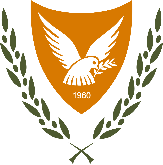The churches of Syrian Antioch : (300-638 CE) /
The churches of Syrian Antioch : (300-638 CE) /
by Wendy Mayer & Pauline Allen.
- Leuven: Paris Walpole, MA Peeters, 2012.
- xviii, 372 p. : ill, map, plans ; 24 cm.
- 5 .
Includes bibliographical references (p. [235]-254) and indexes.
Part 1. Survey of the churches. St Babylas -- St Barlaam -- Campus martius -- Church of Cassian -- Church in the New (City) -- Church in Machouka -- Church in Seleucia Pieria (lower city) -- Church in Seleucia Pieria (upper city) -- Sts Cosmas and Damian -- St Dometius -- Great Church-- Church of the Holy Prophets -- St Ignatius -- John the Baptist -- St John -- St Julian --- Koimeterion -- St Leontius -- Church of the Maccabees -- Martyrium of the Maccabees (Daphne) -- Martyrium at the Romanesian gate -- Martyrium at the Temple of Apollo (Daphne) -- Church of Michael the Archangel -- Churches of Michael the Archangel in Daphne -- Palaia -- St Romanus -- St Stephen protomartyr -- Symeon Stylites the Elder -- Church of the Theotokos -- Martyrium of Thomas -- Church of Thomas the Apostle (Seleucia Pieria) -- Non-specific data --Dubia -- Part 2. Influences and motives. Phase One: Before Constantine -- Phase Two: Constantine to Theodosius I --Phase three: Theodosius II to Zeno -- Phase Four: Anastasius to Heraclius -- Part 3: Use and function.- Martyrium or Church? -- The Cathedral Church -- Stational use of churches and liturgical processions -- Mobile bodies and private veneration -- Possession, dispossession, and repossession-- Liturgical organization and corporate use -- Personnel -- More than a place of worship --Postscript.
In The Churches of Syrian Antioch (300-638 CE) Wendy Mayer and Pauline Allen for the first time draw together all of the existing evidence concerning the Christian worship sites of this influential late-antique city, with significantly new results in a number of cases. In addition to providing a catalogue of the worship sites, in which each entry critiques and summarizes the available data, supplemented by photographs from the excavations, the authors analyze the data from a number of perspectives. These include the political, economic and natural forces that influenced the construction, alteration and reconstruction of churches and martyria, and the political, liturgical and social use and function of these buildings. Among the results is an emerging awareness of the extent of the lacunae and biases in the sources, and of the influence of these on interpretation of the city’s churches in the past. What also rises to the fore is the significant role played by the schisms within the Christian community that dominated the city’s landscape for much of these centuries. -- Publisher.
Church architecture--Turkey--Antioch
Church history--Primitive and early church, ca. 30-600
Excavations (Archaeology)--Turkey--Antioch
Church buildings--Turkey--Antioch
Antioch (Turkey)--Church history
Αντιόχεια (Τουρκία)--Αρχαιότητες
Includes bibliographical references (p. [235]-254) and indexes.
Part 1. Survey of the churches. St Babylas -- St Barlaam -- Campus martius -- Church of Cassian -- Church in the New (City) -- Church in Machouka -- Church in Seleucia Pieria (lower city) -- Church in Seleucia Pieria (upper city) -- Sts Cosmas and Damian -- St Dometius -- Great Church-- Church of the Holy Prophets -- St Ignatius -- John the Baptist -- St John -- St Julian --- Koimeterion -- St Leontius -- Church of the Maccabees -- Martyrium of the Maccabees (Daphne) -- Martyrium at the Romanesian gate -- Martyrium at the Temple of Apollo (Daphne) -- Church of Michael the Archangel -- Churches of Michael the Archangel in Daphne -- Palaia -- St Romanus -- St Stephen protomartyr -- Symeon Stylites the Elder -- Church of the Theotokos -- Martyrium of Thomas -- Church of Thomas the Apostle (Seleucia Pieria) -- Non-specific data --Dubia -- Part 2. Influences and motives. Phase One: Before Constantine -- Phase Two: Constantine to Theodosius I --Phase three: Theodosius II to Zeno -- Phase Four: Anastasius to Heraclius -- Part 3: Use and function.- Martyrium or Church? -- The Cathedral Church -- Stational use of churches and liturgical processions -- Mobile bodies and private veneration -- Possession, dispossession, and repossession-- Liturgical organization and corporate use -- Personnel -- More than a place of worship --Postscript.
In The Churches of Syrian Antioch (300-638 CE) Wendy Mayer and Pauline Allen for the first time draw together all of the existing evidence concerning the Christian worship sites of this influential late-antique city, with significantly new results in a number of cases. In addition to providing a catalogue of the worship sites, in which each entry critiques and summarizes the available data, supplemented by photographs from the excavations, the authors analyze the data from a number of perspectives. These include the political, economic and natural forces that influenced the construction, alteration and reconstruction of churches and martyria, and the political, liturgical and social use and function of these buildings. Among the results is an emerging awareness of the extent of the lacunae and biases in the sources, and of the influence of these on interpretation of the city’s churches in the past. What also rises to the fore is the significant role played by the schisms within the Christian community that dominated the city’s landscape for much of these centuries. -- Publisher.
Church architecture--Turkey--Antioch
Church history--Primitive and early church, ca. 30-600
Excavations (Archaeology)--Turkey--Antioch
Church buildings--Turkey--Antioch
Antioch (Turkey)--Church history
Αντιόχεια (Τουρκία)--Αρχαιότητες
